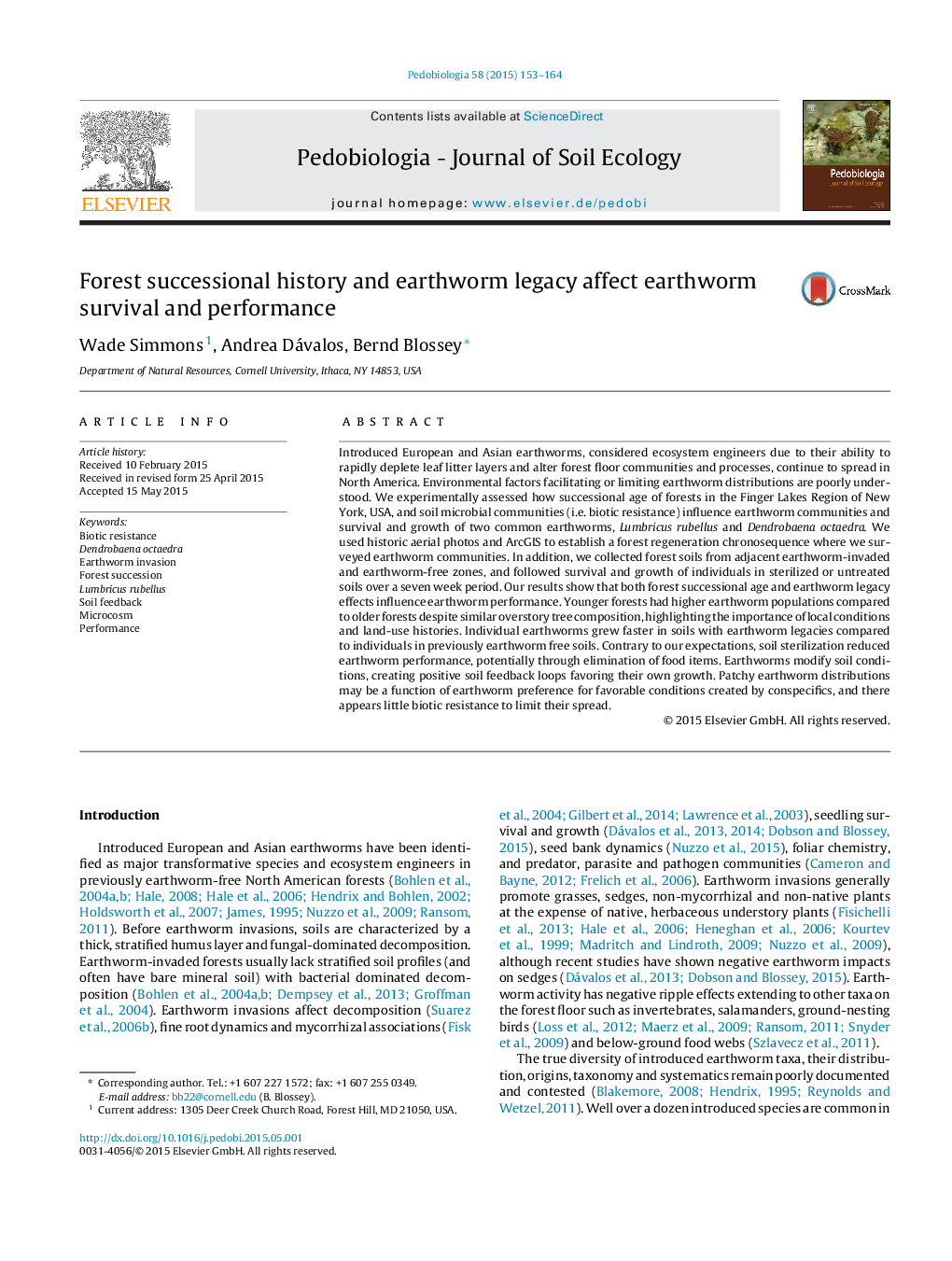| کد مقاله | کد نشریه | سال انتشار | مقاله انگلیسی | نسخه تمام متن |
|---|---|---|---|---|
| 2060990 | 1076425 | 2015 | 12 صفحه PDF | دانلود رایگان |
• Forest successional age affects earthworms by reducing survival and growth.
• Earthworms grew faster in soils with earthworm legacies.
• Soil sterilization increased earthworm mortality rates.
• Patchy earthworm distributions may result from conditions created by conspecifics.
Introduced European and Asian earthworms, considered ecosystem engineers due to their ability to rapidly deplete leaf litter layers and alter forest floor communities and processes, continue to spread in North America. Environmental factors facilitating or limiting earthworm distributions are poorly understood. We experimentally assessed how successional age of forests in the Finger Lakes Region of New York, USA, and soil microbial communities (i.e. biotic resistance) influence earthworm communities and survival and growth of two common earthworms, Lumbricus rubellus and Dendrobaena octaedra. We used historic aerial photos and ArcGIS to establish a forest regeneration chronosequence where we surveyed earthworm communities. In addition, we collected forest soils from adjacent earthworm-invaded and earthworm-free zones, and followed survival and growth of individuals in sterilized or untreated soils over a seven week period. Our results show that both forest successional age and earthworm legacy effects influence earthworm performance. Younger forests had higher earthworm populations compared to older forests despite similar overstory tree composition, highlighting the importance of local conditions and land-use histories. Individual earthworms grew faster in soils with earthworm legacies compared to individuals in previously earthworm free soils. Contrary to our expectations, soil sterilization reduced earthworm performance, potentially through elimination of food items. Earthworms modify soil conditions, creating positive soil feedback loops favoring their own growth. Patchy earthworm distributions may be a function of earthworm preference for favorable conditions created by conspecifics, and there appears little biotic resistance to limit their spread.
Journal: Pedobiologia - Volume 58, Issue 4, July 2015, Pages 153–164
